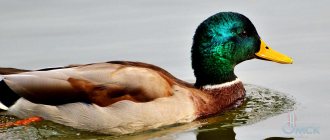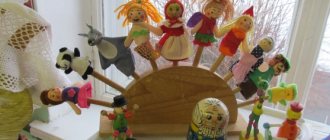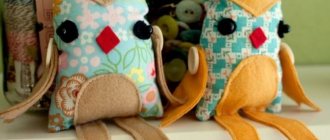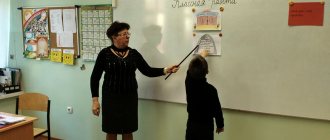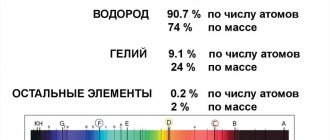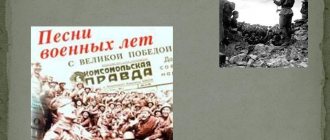Let's start a story about migratory birds
A modern child who grew up in an urbanized society and has reached preschool age should already know not only the objects around him, but also the living nature of his native land. It’s just quite difficult to tell a child about something he hasn’t seen himself. That is why it is worth carefully preparing for a story about migratory birds. First of all, you need to find thematic pictures with names and images of not only migratory birds, but also wintering ones, search the Internet for the sounds they make and their singing.
Try to collect representatives of migratory birds on one piece of paper, and wintering birds on the other, only each image must be labeled.
For example, migratory birds include:
- finch,
- wagtail,
- song thrush,
- redstart,
- Chiffchaff,
- swallow,
- forest pipit,
- robin,
- lapwing,
- lark,
- oriole.
And for winterers:
- sparrows,
- crow,
- tits,
- bullfinches,
- pigeons,
- owls,
- woodpeckers,
- fourty.
Visualization will allow children not only to replenish their vocabulary with new bird names, but also to relate what they hear to specific images.
To consolidate knowledge, you can make an additional Whatman paper with images of birds, where migratory and wintering birds will be collected together for children. After the baby gets acquainted with all the birds, let him tell you what each of them is called, which birds fly south, which ones remain for the winter. It is even more convenient and interesting to complete this task using a large magnetic board.
Conduct the conversation as a dialogue. For example, ask: “Is the tit a migratory bird or not? Where and when did you see this bird? Remember together what birds you have seen before, and why some are difficult to see during the day.
Birds 2nd grade presentation for a lesson on the world around us (2nd grade) on the topic
Lesson "The world around us"
2nd grade.
primary school teacher
MBOU Secondary School No. 115. Karnaukhova S.N.
Topic: “Birds in winter.”
Goals:
- Introduce students to the birds that winter with us.
- To introduce and systematize knowledge about migratory, nomadic and sedentary birds.
- Show the difficulties that birds encounter in winter.
- Instill love and respect for birds.
Equipment: projector, screen.
During the classes.
Organizing time.
Updating knowledge.
- Presentation. Slide 1-7.
- Teacher: - Who are we going to talk about today?
-What birds can we see in winter?
-Why do some birds fly away, while others remain or, on the contrary, fly to us?
-What food can these birds find in winter?
Discovery of new knowledge.
- Student. First snow. How much joy he brings. But the joy will be double if we suddenly see an important, proud red-breasted bird on the branches of a rowan, maple or other tree. Or a whole flock of such birds fly to us from colder places, from the north. What bird is this story about?
- Presentation. Slide 8.
- -Why did it get such a name?
-Where does she come to us from?
-What does she eat?
- Student. It happens that you see a whole bunch of crushed cones in the forest near a tree or stump. Who brought them here?
- Presentation. Slide 9.
- Student. This is his dining room. In winter, the woodpecker eats pine or spruce seeds. which he takes out from the cones. He picks off a cone and flies with it to his dining room. He hammers the cone into the crack and begins to knock on it with his strong beak, taking out the seeds. When he finishes with one lump, he flies after another.
“Knock-knock-knock,” he knocks all day in his dining room. Like a blacksmith in a forge. That is why the woodpecker’s table is also called “smithy”.
- —What does a woodpecker eat in winter and what in summer?
-What is a woodpecker’s “forge”?
- Student: What bird has a beak that looks like curved pincers?
-Which bird has chicks in winter?
The crossbill feeds on seeds of coniferous trees. They also feed the chicks. With the help of its miraculous beak, the crossbill deftly cuts off the cone, pushes the scales apart and takes out the seeds. In winter, crossbills usually have a lot of food. So they hatch chicks at this time of year.
- .Presentation. Slide 10.
- — Why do crossbills hatch chicks in winter?
— Why is there a lot of food in winter?
— What helps crossbills get food?
- Student. In the park, in the garden, at the feeders, you can see a nuthatch in a flock of different tits.
- Presentation. Slide 11.
- Student. This small, short-tailed bird immediately attracts attention with its ability to quickly run upside down along a tree trunk. A special structure of their paws with very long fingers and claws helps them in this.
In summer, the nuthatch stores hazelnuts, hiding them in the crevices of trees. In winter, the nuthatch uses its storerooms.
- -What is the difference between the nuthatch and other birds?
— Why does the nuthatch climb well?
- Presentation. Slide 12.
- Student. The waxwing is not inferior in beauty to many birds. The feathers on the body are reddish-gray, at the end of the black tail there is a wide yellow stripe, across the wing there are red droplets, on the neck there is a black scarf, and on the head there is a large crest.
The waxwing loves rowan berries. In a day he can eat more of them than he weighs!
- — How does the waxwing differ in appearance from other birds?
—What does a bird eat?
Consolidation of what has been learned.
Presentation. Slide 13.
- What are the names of birds that do not fly away for the winter?
- What birds can we see in winter?
- Why don’t they fly away, but stay with us for the winter?
- Presentation. Slide 14 -22.
Why do birds fly to warmer climes?
It will be interesting for children to learn the reasons for the flight of birds. Tell us that the birds that live in the field, in swamps and ponds, fly away for the winter, because the reservoirs freeze, and they cannot find food, because they cannot get frogs and fish; also in the field, all rodents hide deep in burrows The birds that live in the forest can no longer find insects in winter, which fall into deep sleep or die in the cold season.
Tell your child interesting facts about birds. For example, that birds fly south for the winter, lining up in certain shapes.
Birds can line up:
- straight front,
- crowded flock,
- joint,
- wedge
The flight of birds in a wedge or other shape is of particular significance. The wedge is built according to the principle: the strong and adults fly first, followed by the youngest and weakest. The leader of the group shows the way and, cutting through the air, helps the weak in flight.
Sometimes there are several leaders in a pack. They fly first in line so as not to get exhausted and go off course. Those who close the wedge constantly make sounds, encouraging the leaders and confirming their presence.
Find and show pictures of birds flying to children, even better if it is a video. It is well known that it is better to see once than to hear a hundred times.
Flying birds - video
You can tell an older child that migratory birds fly away not only during the onset of cold weather, but also in the middle of summer, that each type of bird behaves differently before flying.
Birds learn about the onset of cold weather and the need to fly away not from the newspaper or news; their instinct is more accurate in forecasts than the media. Birds always know exactly when to start preparing for a long flight, sometimes they even make test flights. The body of birds is also preparing for long routes. He begins to rebuild so that the bird is ready for difficult times.
Why do birds return in the spring?
Try to find out your child’s opinion about why birds return to their homeland after wintering. The answer is, in fact, simple: in warm countries there is not enough space and food for everyone to build a nest and raise offspring. Birds are designed in such a way that if conditions are favorable for raising chicks, the brood becomes larger. Competition among species would destroy entire clans of birds. It is the care of future chicks that pushes the tailed parents to travel thousands of kilometers and return home.
Features of reproduction
All birds, without exception, lay eggs, which differ in size and color. Forest dwellers who lay eggs in hollows or nests often have white shells. If a clutch of eggs lies on the ground, then their color will be appropriate: brown, pockmarked, in a word, inconspicuous to the eye.
Rice. 3. Laying eggs.
To protect eggs from predators and keep warm, many birds build nests in hard-to-reach places. Some species use empty hollows, holes or abandoned holes in rocks for these purposes.
There are birds that do not bother building a nest and hatching chicks. For example, Australian big-footed chickens travel a long way to get to the sea coast and lay eggs in the warm sand. After this, they immediately return, and the hatched chicks then find their way home on their own.
What else is important for children to know about birds?
Include information about how migratory birds live in your message about migratory birds. Birdhouses, nests made of twigs in trees, made of clay and twigs under the roofs of residential buildings, as well as cages - all these are the apartments of birds. During your walks you can see these houses - don’t miss the opportunity to show them to your child. In addition, it will be interesting for the young naturalist not only to see, but also to make a birdhouse himself.
You can celebrate Bird Day with your children, which takes place on April 1st. Read more about this day below.
Have a picnic in nature, take the prepared birdhouses with you and hang them on the trees. Tell us which birds can choose this house for themselves and their chicks. Among them there may be not only starlings, but also sparrows, tits, and other birds for which the size of the house will suit. Perhaps the next time you visit this place together, the voices of birds will already be heard there.
Video lesson “Migratory birds for children”
Option 4. Story-description of a migratory bird stork
The stork is a very beautiful bird. It is large in size and has a wide wingspan. Nature has endowed him with a white outfit, only the flight feathers of his wings are painted black.
He always makes his large nests at a height, most often near human habitation, but he can also choose a remote corner of the wild. A slender, beautiful stork looks from the top of his nest at people below and is not at all afraid of them: and he most often makes his nests on power poles, on roofs, large strong trees and water towers.
Storks most often leave our areas for the winter. They gather in flocks and move to Africa. Gradually, on their way, small flocks flock into large ones. Then in the sky you can see migrating storks and their brothers: cranes and herons, by the thousands.
Maria Anatolyevna Kotova
Summary of a lesson on writing a descriptive story “Birds of Migratory”
Compiling a descriptive story on the topic : “ Birds of Migratory ”
1. Strengthen the ability to compose a descriptive story according to a diagram .
2. Consolidate knowledge about migratory birds , their structure and habits.
3. Strengthen the ability to form antonyms.
4. Continue to develop monologue speech skills.
All about migratory birds for preschoolers and primary schoolchildren in games and tasks
For your activities and lessons, you can prepare a variety of hands-on activities for children that will give them a basic introduction to birds and help develop their hand motor skills and communication skills. By using small prizes for those who do well and for competition winners, you can encourage children to try their best to solve problems.
Poems and stories for children about migratory birds
Now you can find many books with fairy tales, poems, and riddles about migratory birds.
Here is a small list of children's writers and poets who wrote about flyers:
- Mikhail Prishvin,
- Korney Chukovsky,
- Vitaly Bianki,
- Dmitry Kedrin,
- Apollon Maikov,
- Boris Pasternak,
- Ivan Turgenev.
The child will be interested in listening to or reading interesting poems and stories about birds after a brief acquaintance with birds. Learn a poem with your child. This will help him not only improve his memory, but also remember your story for a long time.
Games and tasks
Quiet games with a bird theme
- There are many bird coloring pages online that can be printed on a regular printer. Children can color them with paints, pencils or felt-tip pens of different colors, depending on the type of bird.
- You can also use puzzles depicting birds with details of both small and large sizes.
- You can try organizing a competition for the best drawing. After printing out images of several types of birds, place them on the tables. Children will need to use these pictures as references to draw the birds themselves on a separate sheet of paper. Award prizes for the best, most creative, and most realistic drawing.
Games to develop attention
- Use the popular game “Memory”, making it yourself, for the development and education of children. For this game you need to print several types of birds on small cards: 2 images of each species. To make cards more durable, laminate them. Place the cards on the surface with the images facing down. Have the children come up and take turns turning over two cards. The child who finds the most pairs of identical birds will win.
- For another attention game, place pictures of birds on the board and ask children to look closely at them. Then the children will have to close their eyes (for example, turn away or, if they are sitting at tables, lower their heads onto its surface, after folding their hands), and at this time you will remove one of the pictures from the board. When they look at the board again, the first one to realize which bird is missing (flying away) will receive a small prize.
Feeding the birds
- Children, together with their parents, can make bird feeders, which they will then hang outside the window of their group or class. This will give you the opportunity to observe different birds flying to the feeder.
- Each child can make a feeder on their own, or you can break them up into groups. Place the pine cone on a piece of wax paper and have the kids coat it with the nut butter using a knife or spoon. Using another spoon, sprinkle birdseed over the peanut butter pine cone. You can also use nuts or sunflower seeds. Instead of a cone, you can use, for example, a large soft pretzel or a stale piece of white bread. Also coat it with peanut butter and sprinkle with food.
